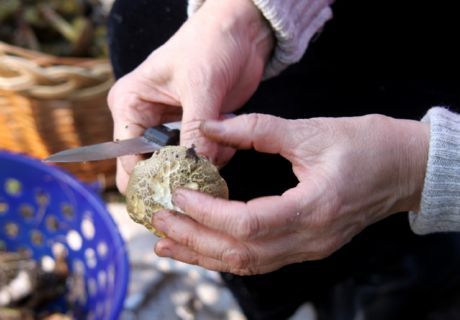New publications
How can you tell the difference between a false mushroom and a real one?
Last reviewed: 01.07.2025

All iLive content is medically reviewed or fact checked to ensure as much factual accuracy as possible.
We have strict sourcing guidelines and only link to reputable media sites, academic research institutions and, whenever possible, medically peer reviewed studies. Note that the numbers in parentheses ([1], [2], etc.) are clickable links to these studies.
If you feel that any of our content is inaccurate, out-of-date, or otherwise questionable, please select it and press Ctrl + Enter.
The false mushroom looks like a real one, that is, in fact, it is a double of an edible mushroom. Numerous cases of poisoning are registered annually during the picking season. To avoid this fate, you need to know the main distinguishing features of edible and false mushrooms.
The white mushroom, or boletus, is one of the most valuable and noble types of mushrooms. It is salted, boiled, dried, fried, marinated. Its false brother is called the gall mushroom. They are almost identical in appearance. But if you look closely at the underside of the cap, you can see significant differences. The false mushroom has a pink underside. When breaking the gall mushroom, you can see a pinkish tint. A real white mushroom does not change color when broken. If a mushroom picker mistakenly puts at least one gall mushroom in the basket, the entire dish prepared from the catch can simply be thrown away. It will be soaked in a bitter taste. You cannot get poisoned by a false white mushroom, but it will be impossible to eat the prepared food.

The birch bolete tastes like a porcini mushroom. The cap is dark or spotted. The false birch bolete is quite light in color, and when broken, it turns pink. The stem contains seals.
Honey fungus is ideal for preparing almost any dish. They are salted, marinated, made into caviar, fried, boiled. Unfortunately, such popular mushrooms have a dangerous double. False honey fungus can be distinguished by the bright yellow color of the cap and monochromatic plates. If you break the mushroom and sniff, the real honey fungus will emit a pleasant mushroom smell. False honey fungus smells like earth, mud, swamp, wood, but not like mushrooms.
Champignons collected in the forest can be confused with death caps. If you carefully examine a real champignon, you can notice brown, brownish or pink gills. Death caps have completely white gills. Death cap poisoning is very dangerous to life, so you need to very carefully examine the appearance of the mushroom and only then put it in the basket.
The most important rule for a mushroom picker is not to take anything that arouses the slightest suspicion, put in the basket only familiar mushrooms that have the characteristic features of real ones. Failure to follow this simple rule can lead to the most serious consequences.

 [
[